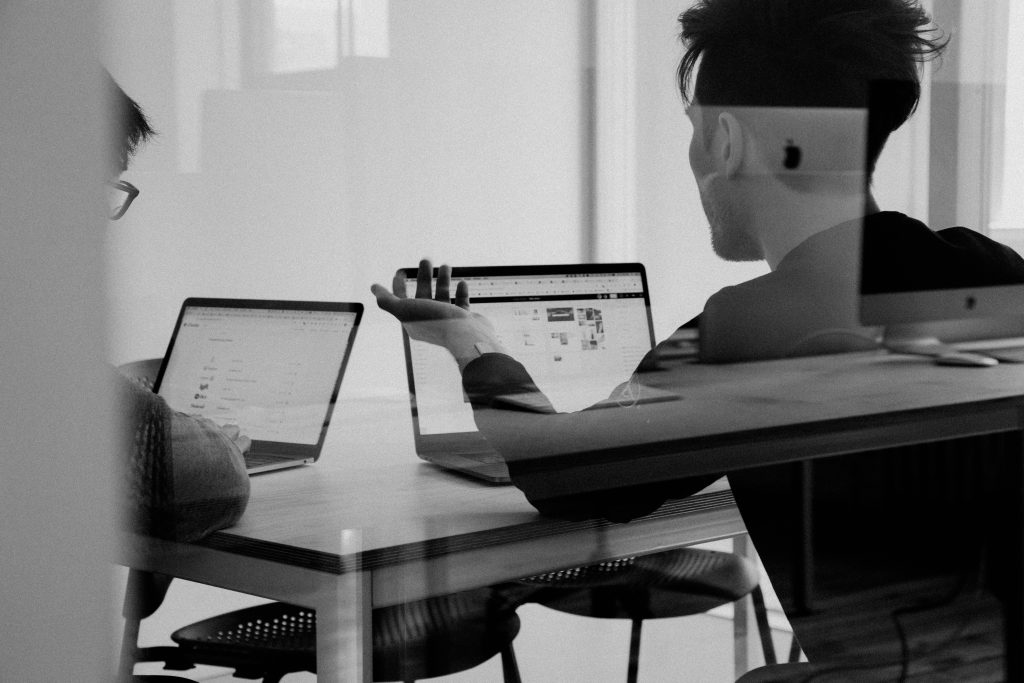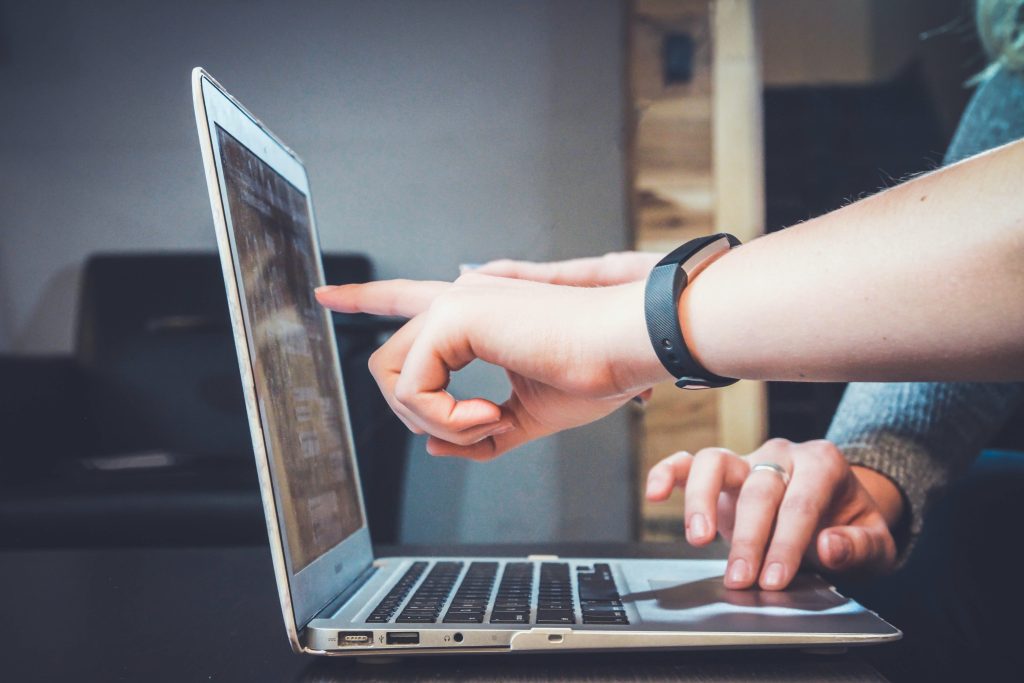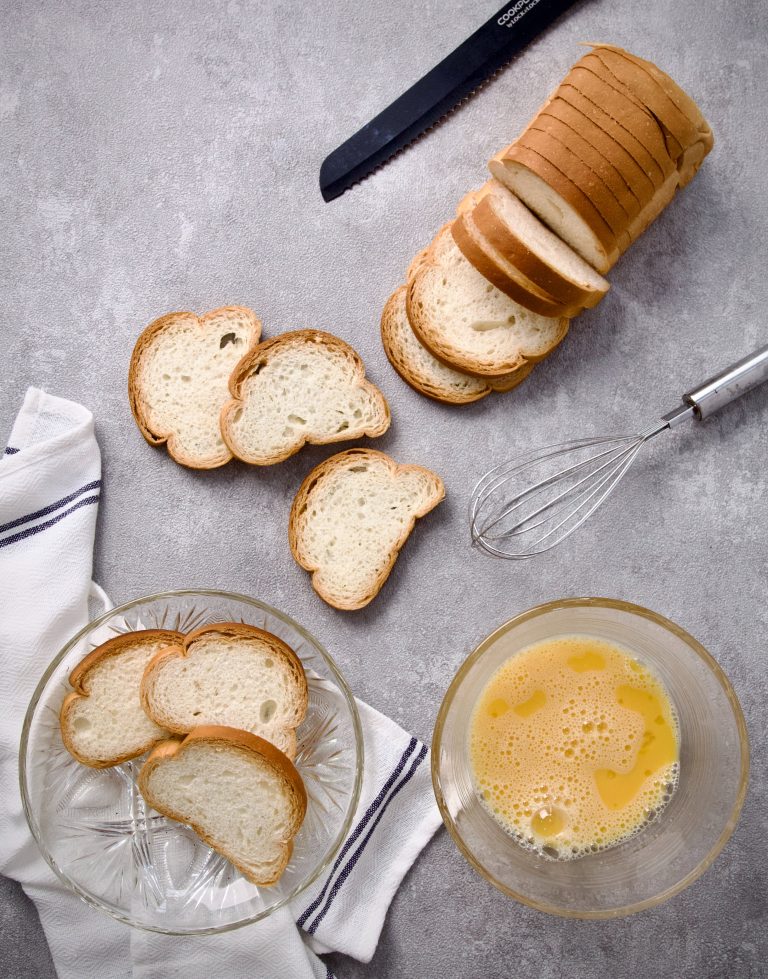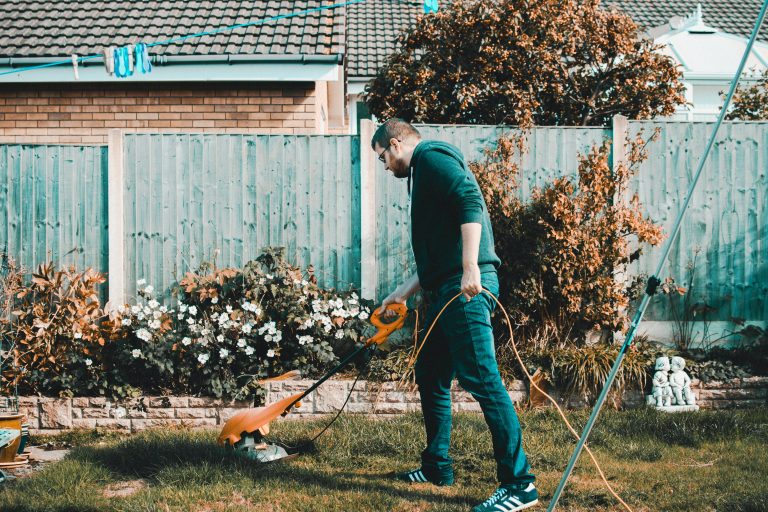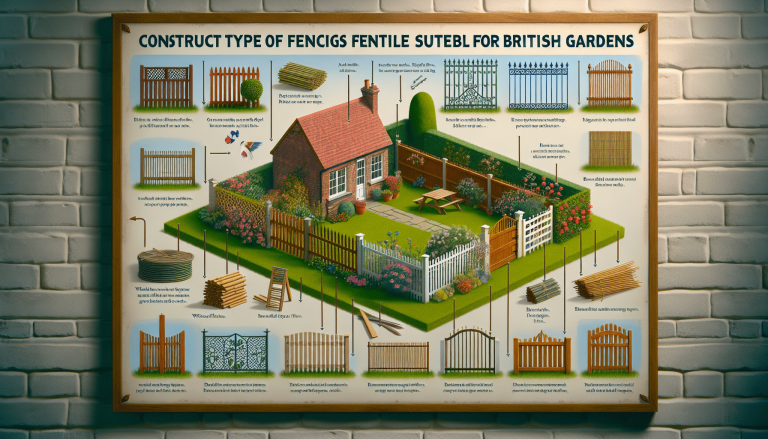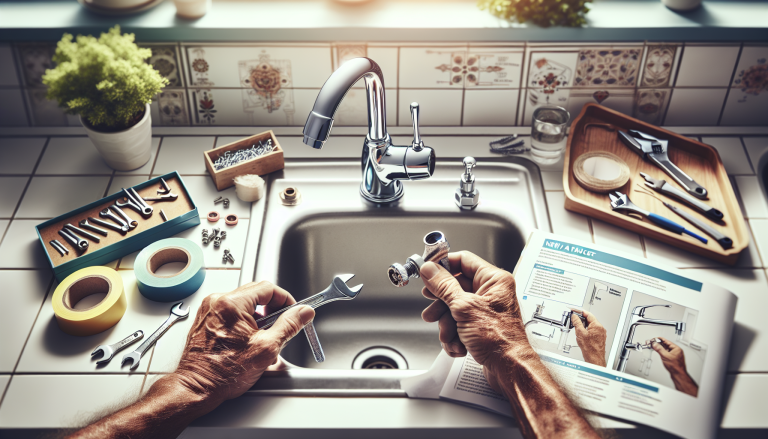Are you tired of struggling to find things in your messy home office? Do you spend precious minutes every day searching for important documents or misplaced stationery? If so, it’s time to take control of your workspace and transform it into an organized and efficient haven. In this article, we will explore some clever DIY solutions that will help you declutter and streamline your home office, creating a space that fosters productivity and peace of mind. From repurposing everyday items to creating custom storage solutions, these ideas are sure to inspire you to transform your chaotic office into a well-organized haven.
Table of Contents
ToggleDesk Organization
Having an organized desk is crucial for maintaining productivity and efficiency in your home office. Here are some clever DIY solutions to help you make the most of your desk space.
Utilizing wall space with floating shelves
One of the best ways to maximize your desk area is by utilizing the often forgotten wall space. Installing floating shelves above or beside your desk provides a great storage solution for items you frequently use or want to display. You can easily find affordable floating shelf kits at your local home improvement store, or if you’re feeling crafty, you can even build your own!
Creating a corkboard wall for notes and reminders
Keeping track of important notes and reminders is essential when working from home. Instead of cluttering your desk with sticky notes, why not create a corkboard wall? Simply attach corkboard tiles to a section of your wall within easy reach. You can use push pins or small clips to secure notes, motivational quotes, or even pictures of loved ones. This will not only help keep you organized but also add a personal touch to your workspace.
DIY drawer dividers for organizing supplies
If you find yourself rummaging through a messy drawer every time you need a pen or a paperclip, it’s time to consider DIY drawer dividers. You can easily make dividers using cardboard, foam board, or even repurposed materials like cereal boxes. Measure your drawer dimensions, cut the dividers to size, and arrange them to create separate compartments for different office supplies. Not only will this save you time searching for items, but it will also keep your desk looking clean and tidy.
Cable Management
Cable management is often overlooked but is crucial for maintaining an organized and safe home office environment. Here are some clever DIY solutions to help you tackle cable clutter.
Using binder clips to keep cables organized
If you’re tired of cables tangling and becoming a mess, binder clips are your best friend. Simply attach them to the edge of your desk, and feed each cable through its individual clip. This way, your cables will stay organized and easily accessible, preventing you from accidentally unplugging the wrong device or getting tangled in a web of cords.
Creating a hidden cable box
If you prefer a more discreet solution, consider creating a hidden cable box. Find a sturdy shoebox or any similar container, cut out a hole at one end for the cables to pass through, and place a power strip inside the box. Now you can neatly tuck away all the excess cable lengths and plugs inside the box, leaving just enough cable exposed to connect your devices.
DIY cable holder using toilet paper rolls
Don’t throw away your empty toilet paper rolls just yet! They can be repurposed as cable holders. Simply flatten the rolls, make a small notch on one side, and thread your cables through. You can then stack and arrange these rolls inside a box or drawer, creating a practical and cost-effective cable management solution.
Storage Solutions
In a home office setup, storage is key. Here are some clever DIY solutions to help you maximize storage space while keeping your office supplies neat and organized.
DIY magazine holders from cereal boxes
Instead of spending money on expensive magazine holders, repurpose empty cereal boxes into stylish and functional organizers for your papers and magazines. Cut off the top flaps and one of the longer sides, leaving the other side intact as the base. Decorate the boxes with wrapping paper, fabric, or paint, and use them to organize your documents on a shelf or desk. Not only will you save money, but you’ll also have a unique storage solution personalized to your taste.
Using mason jars for organizing small items
Mason jars are incredibly versatile and can be used for various storage needs. They are especially useful for organizing small items like pens, paperclips, and thumbtacks. Arrange the jars on your desk or mount them to a wall using pipe clamps for a rustic and functional storage solution. You can even customize the jars by painting them or attaching labels to easily identify what each jar contains.
Building a custom storage unit
If you have a knack for woodworking or are feeling adventurous, building a custom storage unit can be a fun and rewarding project. You can design the storage unit to fit your specific needs, incorporating shelves, drawers, and compartments to accommodate all your office supplies. Remember to measure your available space and plan the design accordingly. This way, you can create a personalized storage solution that optimizes both functionality and aesthetics.
Paper Management
Dealing with a constant flow of papers is a common struggle in any office space. Implementing effective paper management strategies can help you stay on top of your work without feeling overwhelmed. Here are some clever DIY solutions to make paper management a breeze.
Creating a vertical file organizer
If you’re short on desk space but still need to keep your documents readily accessible, a vertical file organizer is the perfect solution. You can easily create one using simple materials like cardboard boxes or file folders. Cut the boxes or folders into appropriate sizes, label each section, and use tape or binder clips to stack them vertically. This way, you can sort and organize your papers without sacrificing precious desk real estate.
DIY paper sorter with cardboard boxes
Another cost-effective way to organize your papers is by repurposing cardboard boxes into a paper sorter. Take a sturdy box and cut it on one side diagonally, creating two triangular sections. Label each section according to your needs, such as “incoming” and “outgoing.” Place this DIY paper sorter on your desk or mount it to the wall for easy access and efficient paper management.
Making a magnetic paper clip holder
Paper clips are a must-have in any office, but they tend to get lost easily. Prevent this by creating a magnetic paper clip holder using a small metal container and a magnet. Attach the magnet to the bottom of the container using adhesive, and place your paper clips inside. Now, you’ll never have to go searching for paper clips again – they’ll always be conveniently stored and within reach.
Desk Accessories
Aside from storage and organization, adding personalized desk accessories can enhance the functionality and aesthetics of your home office. Here are some clever DIY solutions to bring a touch of personality and organization to your desk.
DIY desk organizers from recycled materials
Reduce waste and get creative by repurposing common household items into desk organizers. For example, you can turn old tin cans into pen holders, glass jars into storage cups for small items, and cereal boxes into letter trays. With a little creativity and imagination, you can create unique and eco-friendly desk accessories that perfectly suit your needs.
Building a custom pen-holder
If you’re tired of constantly searching for a pen, consider building a custom pen-holder. You can use various materials such as wood, plastic, or even repurpose a sturdy container. Customize the design to your liking, adding dividers or compartments to organize different types of pens and markers. Now you’ll always have a designated spot for your writing utensils, making them easily accessible whenever you need them.
Creating a personalized memo board
A memo board is not only practical for keeping track of important notes but also serves as a decorative element in your workspace. You can create a personalized memo board using a corkboard, fabric, and some decorative accents. Cover the corkboard with your chosen fabric, secure it with a staple gun, and add any decorative embellishments you desire. Hang the memo board above your desk, and you’ll have the perfect place to pin important reminders or inspirational quotes.
Ergonomics
Maintaining proper ergonomics is crucial for your comfort and well-being during long work hours. Here are some clever DIY solutions to help you create an ergonomic-friendly workspace.
Building a standing desk converter
Sitting for extended periods can lead to a host of health issues. Avoid this by building a standing desk converter. You can repurpose a height-adjustable table or even use stacked boxes or books to elevate your workstation. Ensure your monitor, keyboard, and mouse are at the correct heights, allowing you to comfortably work in a standing position. This ergonomic solution will help improve your posture, reduce back pain, and increase overall energy levels.
Creating a DIY monitor stand
Positioning your monitor at an appropriate height is essential for maintaining good posture and preventing neck strain. Instead of investing in an expensive monitor stand, consider creating one yourself. You can use simple materials like wooden blocks or sturdy boxes to elevate your monitor to eye level. This DIY monitor stand will help alleviate the strain on your neck and improve your overall comfort while working.
Making a lumbar support pillow
Back pain is a common issue when working for long periods. To ensure proper lumbar support, create your own lumbar pillow using foam or even repurpose an old cushion. Sew a cover using fabric of your choice and fill it with the foam or cushion stuffing. Place this lumbar support pillow on your chair, and you’ll experience enhanced comfort and improved posture while working.
Inspiration Boards
Having a source of inspiration and motivation is essential for creative work in any home office. Here are some clever DIY solutions to help you create inspiring and visually appealing inspiration boards.
Creating a gallery wall with clipboards
Clipboards not only serve as practical tools but can also be used to create a visually captivating gallery wall. Attach multiple clipboards to a section of your wall, arranging them in a grid or overlapping pattern. You can then easily clip or change out inspirational quotes, artistic prints, or important documents. This dynamic and ever-changing gallery wall will spark creativity and keep you motivated throughout the day.
Making a fabric-covered bulletin board
Bulletin boards provide an excellent way to pin important notes, deadlines, or artistic inspirations. Instead of settling for a plain corkboard, why not create a fabric-covered bulletin board? Choose a fabric that complements your workspace decor, wrap it tightly around the corkboard, and secure it at the back using a staple gun. Hang the fabric-covered bulletin board on your wall or prop it up on a shelf, instantly adding a touch of style and personalization to your office space.
DIY magnetic board for inspiration
Magnetic boards offer a versatile and practical solution for displaying inspirational quotes, artwork, or important documents. Create your own magnetic board by purchasing a metal sheet or repurposing an old magnetic whiteboard. Customize the board by painting it to match your decor or covering it with fabric. Attach magnets to the back of your desired items, and place them on the magnetic board. This DIY magnetic board will become a focal point in your home office, displaying everything that inspires you.
Filing System
Maintaining an efficient filing system is crucial for staying organized and easily accessing important documents. Here are some clever DIY solutions for creating an effective and personalized filing system.
Organizing files with an accordion folder
An accordion folder is an excellent tool for organizing and categorizing various documents. You can create your own accordion folder by repurposing an old folder or by making one from scratch using sturdy cardboard and decorative paper. Label each section according to your filing needs, such as “bills,” “receipts,” or “client documents.” This DIY accordion folder provides a compact and portable solution for keeping your files in order.
Creating a DIY filing cabinet
If you have a collection of files that require more than a simple folder, consider building your own filing cabinet. You can repurpose an old chest of drawers or build one using plywood and drawer sliders. Customize the cabinet by adding labels to each drawer and using dividers to keep the files organized. This DIY filing cabinet will not only provide ample storage but also add a unique touch to your home office decor.
Making a color-coded filing system
Color-coding is a simple yet effective way to maintain an organized filing system. Assign a different color to each category of files and use colored file folders, labels, or tags to match. For example, use red for financial documents, blue for client files, and green for personal paperwork. This color-coded system will make it easy to locate specific files at a glance, saving you time and eliminating the frustration of searching through a sea of unorganized papers.
Floating Shelves
Floating shelves are not only aesthetically pleasing but also provide an excellent way to add storage and display space to your home office. Here are some clever DIY solutions for incorporating floating shelves into your workspace.
Building floating shelves for extra storage
If you find yourself in need of additional storage space in your home office, floating shelves are the perfect solution. You can easily build your own floating shelves using wooden boards, brackets, and screws. Determine the desired length and depth of the shelves, attach the brackets to the wall, and secure the boards on top. Floating shelves can be used to store books, decorative items, or office supplies, freeing up valuable desk space.
Utilizing floating shelves for displaying decor
Floating shelves also offer a fantastic opportunity to display your favorite decor pieces in your home office. Arrange items like picture frames, small potted plants, or decorative objects on the shelves to add a personal touch and create a visually appealing workspace. Remember to balance functionality and aesthetics when designing your floating shelf displays, ensuring they enhance productivity rather than create distractions.
Creating a floating bookshelf
For book lovers, a floating bookshelf is not only a practical storage solution but also a unique design element in your home office. You can make a floating bookshelf using metal brackets or hidden brackets that are invisible when the books are placed. Attach the brackets to the wall, stack several books horizontally on top, and let the magic of gravity keep them in place. This floating bookshelf not only creates an illusion of books magically floating on the wall but also saves valuable floor and desk space.
Conclusion
Organizing your home office doesn’t have to be a daunting task. With these clever DIY solutions, you can transform your workspace into a functional, efficient, and visually appealing environment. Whether it’s utilizing wall space with floating shelves, implementing effective cable management strategies, or creating personalized storage solutions, there are countless possibilities for organizing every aspect of your home office. Get creative, have fun, and enjoy the benefits of a well-organized workspace that promotes productivity and creativity.

